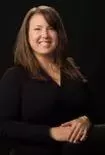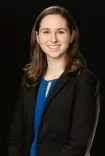California Senate bills became effective January 1, 2022 that impact the Bureau for Private Postsecondary Education and institutions subject to the BPPE's oversight.
The California Legislature passed a number of bills during the 2021 session impacting the Bureau for Private Postsecondary Education (BPPE) and institutions subject to the BPPE's oversight. Senate bills 607, 802 and 803 all became effective on January 1, 2022. This post does not cover all the statutory changes included in these bills, so we encourage you to visit the BPPE's website for more detail.
High School Diploma/Ability-to-Benefit (ATB) Changes (SB607)
Following a legal challenge aimed at the BPPE's requirement that all students attending BPPE-approved institutions have a high school diploma or pass an ATB exam, the Legislature amended the Education Code, allowing institutions to enroll students without a high school diploma or equivalent without requiring that those students pass an ATB exam.
Importantly, the BPPE highlighted that SB 607 does not impact the regulatory requirement that admissions standards be aligned to the specific program. In their recent overview, the BPPE gave special attention to the regulatory language, which states that "institutions shall establish specific written standards for student admissions for each educational program. These standards shall be related to the particular educational program. An institution shall not admit any student who is obviously unqualified or who does not appear to have a reasonable prospect of completing the program."1 The BPPE will assess a program's admissions requirements and determine whether they are reasonable, including whether a high school diploma should be required. In addition, the regulations continue to require verification that admissions requirements are being met, so if your institution will continue to require a high school diploma or equivalent, based on the types of programs being offered, then collecting documentation will still be required. The BPPE has indicated that it will "continue to: 1) monitor for the existence of written standards for each educational program during licensure and 2) ensure enrolled students meet those standards through routine review of student files during compliance inspections."2
Thus, while requiring a diploma or its equivalent may not be mandated, institutions should consider whether completion of secondary education should be a prerequisite for their programs.
Other relevant regulatory sections are going through the amendment process now and will align the BPPE's processes to the new law.
Change to Definition of "Educational Program" (SB802)
Under the BPPE's current statutory structure, an entire institution may be eligible for an exemption if it meets certain statutory requirements, but an approved institution cannot have "exempt" programs. This has created challenges for approved institutions that want to offer short programs not intended to be vocational (e.g., a CPR certification course) as all programs would require the BPPE's approval. This issue was even more acute for accredited institutions whose accreditors do not require approval of those types of programs, but the BPPE would require the accreditor's approval.
To address this, SB802 amends the definition of "educational program" to exclude any program of 32 hours or less that is not meant to lead to employment. Rather than creating a new exemption option, this change removes qualifying short programs from the BPPE's purview completely. This will allow institutions to offer qualifying short programs without BPPE approval, and therefore, without having to comply with the BPPE's standards relating to disclosure in the catalog, School Performance Fact Sheets, using an Enrollment Agreement, collecting Student Tuition Recovery Fund fees, or reporting on the programs as part of the Annual Report.
We encourage institutions to carefully consider whether the short programs being considered can be supported as "not leading to employment." If an institution is marketing a short program as being a tool for promotion, upskilling for certain jobs, or otherwise improving job prospects, it may not qualify under this new definition. The BPPE is currently developing regulations to provide additional guidance on this provision.
Change to Substantive Changes Requiring BPPE Approval (SB802)
The Education Code has long included a list of substantive changes which require BPPE approval prior to implementation. This amendment adds four additional substantive changes to that list:
(1) An increase or decrease of 25%or more in the number of a program's clock or credit hours;
(2) Participation in federal student financial aid programs (Title IV);
(3) Change in the academic measurement of an education program from clock hours to credit hours; and
(4) Change in the distance education learning management system.
Note that the additional substantive change categories do not alter the process for institutions approved by means of accreditation. As was the case previously, accredited institutions are required to follow the substantive change standards of their accrediting agency and notify the BPPE of the change.
Changes to BPPE Enforcement Actions (SB802)
New statutory language allows the BPPE to take enforcement action in situations where a violation may result in harm to students, instead of only in cases where actual harm has already occurred. Although this change seems minor, it may have a broad impact on how the BPPE manages discipline and investigation processes.
Reauthorization of Cosmetology Board and Program Changes (SB803)
The Board of Barbering and Cosmetology (BBC) went through its periodic sunset review in 2021 and as part of that process, the legislature made a number of changes to its authorizing statute, including:
- Reducing the program length requirement for licensure in cosmetology and barbering to 1,000 hours (from 1,600 and 1,500 respectively).
- Creating a 600-hour program for a new (non-chemical) hairstylist license.
- Changing the esthetic scope of practice to include lash and brow tinting and perming.
- Removing the practical examination and therefore eliminates the pre-application process.
- Changing the number of board members from 9 to 13 and requires that one licensee from each sector of the industry be represented on the Board.
- Allowing for a streamlined endorsement process to license an individual from another state that holds a valid license in that state.
- Requiring an apprentice to receive their pre-apprentice training from the Board prior to licensure.
- Updating the requirements for a mobile unit.
- Increasing hours allowed in the extern program.
As with the new laws noted above, these changes went into effect on January 1, 2022. Schools considering making changes based on these statutory changes should first refer to the FAQ published by the BBC for best practices and clarifications on the updates.3
Because the licensing requirement has been reduced to 1,000 hours, rather than 1,500 or 1,600, institutions should evaluate their program lengths and determine whether maintaining the full original length will impact access to Title IV funding. Typically, the Department of Education will not allow an institution to access funds if a program is more than 50% longer than the licensure minimum.
Regulatory Updates
The BPPE is continuing to complete its own sunset review process, as well as amending regulations to implement these statutory changes, and others, to clarify processes and procedures that have created confusion in the past. In January, the BPPE hosted a public town hall to discuss the recent changes to law and the proposed changes to regulations, and in February, the Advisory Committee Meeting included proposed regulatory changes on the agenda. We encourage you to review these materials and provide comments to the BPPE for their consideration.
The BPPE circulated proposed regulatory language implementing some of these changes. The proposed regulations include the following:
- Implementation of SB607 by removing references to ATB. (References currently reside in 5 CCR §71210, §71475, §71770, and §71920)
- Implementation of SB802 by amending the definition of an educational program, excluding any program of 32 hours or less that is not designed to lead to employment. The proposed rule also defines what the BPPE considers "leading to employment":
- The program is eligible for federal or state funds that support career training, including the Workforce and Innovation Opportunity Act (WIOA).
- The program on the Education Training Provider List of the Employment Development Department.
- The program is advertised as leading to employment or a career.
- The program enables entry into a new professional field;
- The program is part of a set of short-term programs that collectively lead to employment; or
- The program is designed to prepare graduates for licensure in a specific professional field. (5 CRR §70000)
Footnotes
1. 5 CCR §71770(a)
2. https://bppe.ca.gov/forms_pubs/2022_laws_memo.pdf
3. See https://www.barbercosmo.ca.gov/forms_pubs/sb_803_faq.pdf
The content of this article is intended to provide a general guide to the subject matter. Specialist advice should be sought about your specific circumstances.


